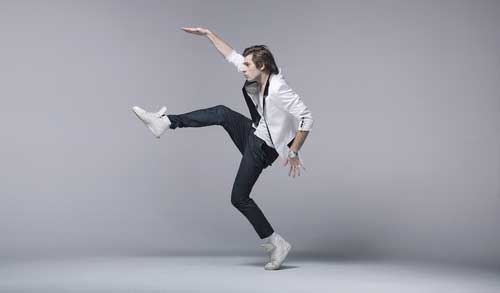When it comes time to focus on a job interview, tech candidates often spend much of their effort (as they should) on delivering perfectly crafted answers and asking their interviewer insightful questions. But as you shape the words, you also need to consider your body language.
Why does body language matter? It shapes the interviewer's first impression, helping convey that you truly know your stuff. Good use of body language can build rapport during a panel interview and help preserve your aching back during an hours-long technical exam. Meanwhile, “poor” body language such as nervous fidgeting, poor eye contact, or crossed arms can potentially harm your viability as a candidate.
Developing Body Language: Key Areas to Focus On
Most job interviews have multiple parts, and you need to adapt your body language to each one. For instance:
- First impressions count: Enter the room with a firm, confident stride. Maintaining good posture. Offer a warm smile and a firm handshake. This projects self-assurance and sets a positive tone.
- Mind your posture: Stand tall, avoid slouching, and keep your shoulders relaxed. This conveys confidence and attentiveness.
- When you sit, find your center: Choose a chair that fits you comfortably and sit upright, avoiding slouching or leaning back. This projects engagement and interest.
- During the interview, avoid fidgeting: Nervous habits like pen-clicking or leg shaking can distract both you and the interviewer. Take a deep breath before the interview to calm your nerves and maintain composure. Focus on your breathing if you find yourself rattled during the interview itself.
- Mirror, mirror on the wall: Subtly mirroring the interviewer's posture can build rapport and create a sense of connection. Lean forward when they do, for example. But be careful to not imitate them too closely, which can be weird!
More Body Language Tips
These tips apply for pretty much any interview stage:
- Make eye contact: Maintain direct eye contact with the interviewer during conversation. This conveys confidence, sincerity, and attentiveness. However, avoid staring. Brief breaks in eye contact are natural and show you're processing information.
- Use natural gestures: Open and expressive gestures can show enthusiasm and engagement, but avoid overly dramatic movements that can be distracting.
- Avoid negative cues: Crossing your arms or fiddling with your hair can subconsciously communicate nervousness or defensiveness. Be mindful of these unconscious gestures and replace them with more positive cues.
- Speak clearly and concisely: Avoid mumbling or speaking too softly. Project your voice and enunciate your words to demonstrate confidence and clarity, especially when facing difficult questions.
- Vary your vocal tone: A monotone delivery can be monotonous and disengaging. Infuse your voice with enthusiasm and inflection to keep the interviewer engaged.
- Listen actively: Lean in, nod appropriately, and maintain eye contact when the interviewer is speaking. This shows respect and genuine interest in what they have to say.
Conclusion: You Can Do This!
Mastering body language is never about faking it until you make it: it’s about using your positioning and nonverbal communication to convey your genuine enthusiasm for a particular role.
It always pays off to practice your body language beforehand, as well. If you can, conduct mock interviews with a friend or record yourself answering common interview questions. As you study and refine your technique, you will become more comfortable and confident with your nonverbal communication.



